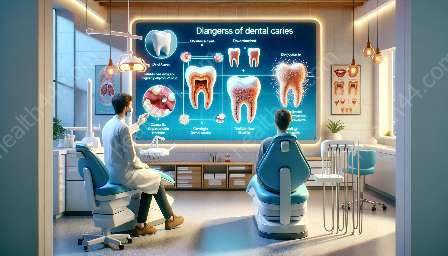As we age, the interconnectedness of various aspects of our health becomes increasingly evident. One such critical link exists between oral health and cardiovascular health. In this comprehensive guide, we will explore the impact of aging on the connection between oral and cardiovascular health, focusing on the implications of cardiovascular diseases and the effects of poor oral health.
The Ageing Process and Oral Health
With advancing age, our oral health undergoes significant changes. Common age-related oral health issues include dry mouth, periodontal disease, tooth loss, and oral cancers. These problems can be exacerbated by factors such as medications, reduced mobility, and underlying medical conditions, making oral health a crucial concern for the elderly population.
Oral Health and Cardiovascular Diseases
Research has established a strong association between oral health and cardiovascular diseases. Poor oral health, especially the presence of gum disease and periodontitis, has been linked to an increased risk of cardiovascular problems such as heart disease, stroke, and atherosclerosis. The exact mechanisms behind this connection are still under investigation, but it is believed that the chronic inflammation and bacterial infections in the mouth can enter the bloodstream, contributing to systemic inflammation and the development of cardiovascular complications.
The Impact of Ageing on the Link between Oral and Cardiovascular Health
As individuals age, the cumulative effects of poor oral health can have a more pronounced impact on overall cardiovascular health. In older adults, the prevalence of cardiovascular diseases tends to increase, and this is further compounded by age-related changes in oral health. The need for a holistic approach that addresses both oral and cardiovascular health becomes increasingly imperative in the elderly population, emphasizing the importance of regular dental care and preventative measures.
Strategies for Maintaining Oral and Cardiovascular Health in the Elderly
Given the significant interplay between oral and cardiovascular health in the context of aging, implementing proactive strategies is crucial. These may include:
- Regular Dental Check-ups: Consistent visits to the dentist enable early detection and management of oral health issues, subsequently benefiting cardiovascular health.
- Healthy Lifestyle Choices: Encouraging a heart-healthy diet, regular physical activity, and tobacco cessation not only supports cardiovascular health but also contributes to better oral health outcomes.
- Medication Management: Older adults often take multiple medications, some of which can impact oral health. Proper management and monitoring of medications can help mitigate these effects.
- Integrated Care: Coordinated efforts between dental and medical professionals can optimize overall health outcomes in the elderly, addressing both oral and cardiovascular concerns in tandem.
The Importance of Dental Care in the Elderly Population
Recognizing the intricate relationship between oral and cardiovascular health in the context of aging underscores the pivotal role of dental care for the elderly. By prioritizing preventive measures, early intervention, and collaborative care, the adverse impact of aging on the connection between oral and cardiovascular health can be mitigated, ultimately promoting better overall health and well-being.
Conclusion
In conclusion, aging exerts a profound influence on the interconnectedness of oral and cardiovascular health. As individuals age, the implications of poor oral health on cardiovascular well-being become more pronounced, highlighting the necessity for comprehensive care that addresses both domains. By understanding and addressing the impact of aging on the link between oral and cardiovascular health, healthcare professionals and individuals can work towards fostering better health outcomes in the elderly population.



